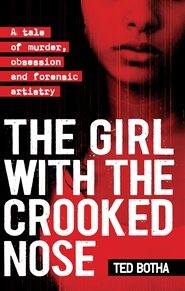Smoking Gun
Posted on June 24, 2008
Filed Under Arts/Culture, Entertainment, Events, Music, NYC, Women | Comments Off on Smoking Gun
 Pistolera is a NYC-based band that defines the latin alt-folklorico genre. Drawing from traditional styles of Mexican music and fusing it with pop-rock sensibility, the electrifying quartet features Spanish lyric songs of vocalist and guitarist Sandra Lilia Velasquez, the driving accordion melodies of Maria Elena and the unbeatable rhythm section of bassist Inca B. Satz and drummer Ani Cordero.
Pistolera is a NYC-based band that defines the latin alt-folklorico genre. Drawing from traditional styles of Mexican music and fusing it with pop-rock sensibility, the electrifying quartet features Spanish lyric songs of vocalist and guitarist Sandra Lilia Velasquez, the driving accordion melodies of Maria Elena and the unbeatable rhythm section of bassist Inca B. Satz and drummer Ani Cordero.
Since the release of their debut album “Siempre Hay Salida” in 2006, the band has been featured in Rolling Stone Magazine, Billboard Magazine, The New Yorker, Latina Magazine and NPR. Pistolera has also been very vocal about immigrant rights and their contribution to this country. They performed last May at the Union Square Rally in NYC in support of immigrant rights and justice for all human beings.
Their sophomore album ” En Este Camino” will be released nationwide on August 5. Pistolera will play Central Park’s Summerstage on August 9th. Make sure you catch this fiery funky band!
Sculptor Helps Identify Juarez Murders
Posted on June 23, 2008
Filed Under International, Justice, Women | Comments Off on Sculptor Helps Identify Juarez Murders

 For more than a decade, the cities of Chihuahua and Juarez, near the US-Mexico border, have been killing fields for young women, the site of over 400 unsolved femicides. Despite the horrific nature of these crimes, authorities at all levels exhibit indifference, and there is strong evidence that some officials may be involved. Impunity and corruption has permitted the criminals, whoever they are, to continue committing these acts, knowing there will be no consequences. A significant number of victims work in the maquiladora sector – sweatshops that produce for export, with 90% destined for the United States. The maquiladoras employ mainly young women, at poverty level wages. In combination with lax environmental regulations and low tariffs under the North America Free Trade Agreement (NAFTA), the maquiladoras are amassing tremendous wealth. Yet despite the crime wave, they offer almost no protection for their workers. High profile government campaigns such as Ponte Vista (Be Aware), a self defense program, and supplying women with whistles have been ineffective and are carried out mainly for public relations purposes.
For more than a decade, the cities of Chihuahua and Juarez, near the US-Mexico border, have been killing fields for young women, the site of over 400 unsolved femicides. Despite the horrific nature of these crimes, authorities at all levels exhibit indifference, and there is strong evidence that some officials may be involved. Impunity and corruption has permitted the criminals, whoever they are, to continue committing these acts, knowing there will be no consequences. A significant number of victims work in the maquiladora sector – sweatshops that produce for export, with 90% destined for the United States. The maquiladoras employ mainly young women, at poverty level wages. In combination with lax environmental regulations and low tariffs under the North America Free Trade Agreement (NAFTA), the maquiladoras are amassing tremendous wealth. Yet despite the crime wave, they offer almost no protection for their workers. High profile government campaigns such as Ponte Vista (Be Aware), a self defense program, and supplying women with whistles have been ineffective and are carried out mainly for public relations purposes.
The tragic saga of the dead in Juárez—directly across the river from El Paso, Texas—has been covered by those who care. Amnesty International called the murders intolerable and condemned the Mexican government for ignoring them; other human-rights groups have leveled similar criticisms over the years.
In 2003, Frank Bender, a Philadelphia forensic sculptor was asked to help the police in Juarez. For reasons he doesn’t fully understand, the Mexican police on the case ask him to help identify some of the feminicidios. Bender, through breathtakingly realistic sculptures, reconstructs the faces of unknown murder victims whose appearances are certain to have changed over years. Bender worked for days in a Juárez hotel room with crumbling skulls, facing down death threats and an infection from the bad water as he tried to create identifiable likenesses of the dead women.
 Of all the cases he covers, Bender is especially obsessed with the murders of the estimated 400 women in Juarez. One of the unidentified victims, Bender nicknamed “The Girl with the Crooked Nose,” which since became the title for Ted Botha’s book on Bender’s forensic work. The book, looks at the crimes from a different perspective. Described as a nonfiction thriller, the book views the murders through the eyes of Frank Bender.
Of all the cases he covers, Bender is especially obsessed with the murders of the estimated 400 women in Juarez. One of the unidentified victims, Bender nicknamed “The Girl with the Crooked Nose,” which since became the title for Ted Botha’s book on Bender’s forensic work. The book, looks at the crimes from a different perspective. Described as a nonfiction thriller, the book views the murders through the eyes of Frank Bender.
After more than a decade, the only things that are clear are that the murders aren’t going to stop anytime soon. Take action and visit Amnesty International today, sign a petition to Mexican president Felipe Calderon urging him to take action.
Marc Jacobs’s New Campaign
Posted on June 23, 2008
Filed Under Advertising, Fashion, Gay/Lesbian, Women | 1 Comment
 Posted by Nina Schloesser
Posted by Nina Schloesser
Male model Cole Mohr wears a dress (and carries a handbag) in the Marc by Marc Jacobs fall 2008 ad campaign, shot by Juergen Teller. The Jacobs-Teller collaboration, which began in 1997, is known for having produced some of fashion’s most memorable advertising. The inspiration for this season’s ads may have come from Filipino blogger BryanBoy, whose personal wardrobe includes handbags and minidresses (and in whose honor Marc Jacobs christened a bag from his fall 2008 line “the BB”). BryanBoy jubilantly affirms on his blog, “I’m so gay I sweat glitter!”, but the decision to showcase male femininity in the new Marc by Marc ads argues that its appeal is expected to far exceed the confines of the gay world. In fact, the ads, which will run for both the menswear and womenswear lines, are largely meant to sell the bow-fronted dress worn by Mohr, along with many others of its brand, to women.
The ads fit in perfectly with the Jacobs-Teller tradition of irreverent advertising that creates cool by appearing to scorn it. More importantly, in my opinion, these photographs are beautiful enough to sell anything. Take Jacobs’s clothes, Teller’s eye, and Mohr’s scruffy angular beauty, and how can you go wrong? Though the ads are already making waves, they are hardly without precedent. Fashion has long recognized male femininity as a stylistic, sexual, and creative force, one that can be mined for art, for love, and for money. In a celebrated recent example, downtown personage Andre J. appeared alongside supermodel Carolyn Murphy on the November 2007 cover of Vogue Paris, in a blue Burberry trench, heels, and a beard. Andre J., known for his legs, is now offering catwalk-strutting lessons to women.
With the Village Voice announcing “the triumph of the lipsticks,” and claiming that “glamorous” lesbians have conquered Manhattan, my question is this: when will female masculinity of the unabashed sort (as unabashed as the femininity of BryanBoy and Andre J.) be regarded as glamorous? Which is to say, quite frankly, when will a butch image be able to sell clothes, sell sex, sell itself?
I argue that the image of female masculinity is as subversive, as enthralling, as mysterious–in short, as powerful as the image of male femininity. Fashion has harnessed its power, flirting with female masculinity without ever quite embracing it. The legendary couturier Yves Saint Laurent famously put feminine women in pants. Photographers as powerful as Steven Meisel and Mario Testino have loved the faces of women with masculine or androgynous features, from Erin O’Connor and Hannelore Knuts to Omahyra Mota. When, then, will the beautiful “Jax,” a butch photographed often by Del LaGrace Volcano, join, say, Tyson Ballou on the cover of L’Uomo Vogue? When will she, or another masculine woman like her, be photographed for a Tom Ford campaign in such a way that straight men everywhere will flock to the store to buy her suit?
 Cathy Horyn, fashion critic for the New York Times, has said that “the irony in fashion is that it loves change but it can’t actually change anything. It can only reflect a change in the air. But what changes fashion?” The answer, I think, is ourselves. To put a butch on the cover of Vogue, let us prize and defend our conviction that the experience of gazing upon her is beautiful not just for us, but for real.
Cathy Horyn, fashion critic for the New York Times, has said that “the irony in fashion is that it loves change but it can’t actually change anything. It can only reflect a change in the air. But what changes fashion?” The answer, I think, is ourselves. To put a butch on the cover of Vogue, let us prize and defend our conviction that the experience of gazing upon her is beautiful not just for us, but for real.







